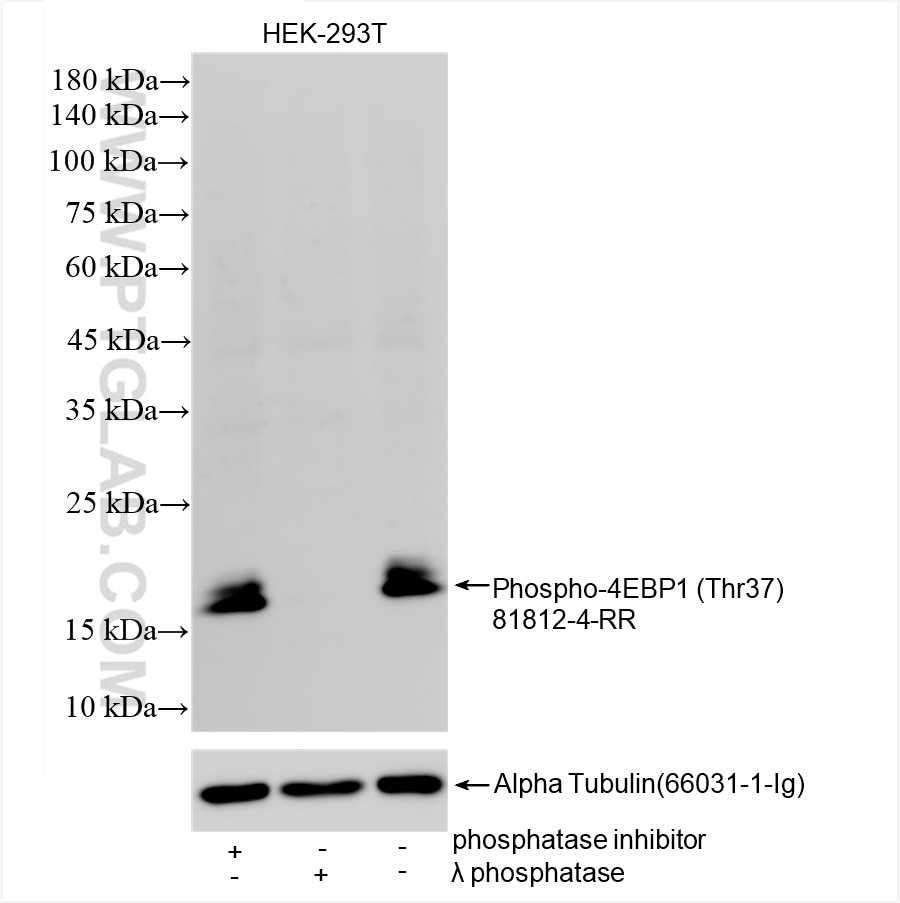Tested Applications
| Positive WB detected in | HEK-293T cells, λ phosphatase treated HEK-293T cells |
Recommended dilution
| Application | Dilution |
|---|---|
| Western Blot (WB) | WB : 1:1000-1:4000 |
| It is recommended that this reagent should be titrated in each testing system to obtain optimal results. | |
| Sample-dependent, Check data in validation data gallery. | |
Product Information
81812-4-RR targets Phospho-4EBP1 (Thr37) in WB, ELISA applications and shows reactivity with human samples.
| Tested Reactivity | human |
| Host / Isotype | Rabbit / IgG |
| Class | Recombinant |
| Type | Antibody |
| Immunogen | Peptide Predict reactive species |
| Full Name | eukaryotic translation initiation factor 4E binding protein 1 |
| Calculated Molecular Weight | 118 aa, 12 kDa |
| Observed Molecular Weight | 15-20 kDa |
| GenBank Accession Number | BC004459 |
| Gene Symbol | EIF4EBP1 |
| Gene ID (NCBI) | 1978 |
| RRID | AB_3670507 |
| Conjugate | Unconjugated |
| Form | Liquid |
| Purification Method | Protein A purification |
| UNIPROT ID | Q13541 |
| Storage Buffer | PBS with 0.02% sodium azide and 50% glycerol, pH 7.3. |
| Storage Conditions | Store at -20°C. Stable for one year after shipment. Aliquoting is unnecessary for -20oC storage. 20ul sizes contain 0.1% BSA. |
Background Information
4EBP1 (4E-BP1) is a translational regulator and functions by sequestering eukaryotic translation initiation factor 4E (eIF4E) from the translation initiation machinery. 4E-BP1 contains at least six phosphorylation sites (Thr37, Thr46, Ser65, Thr70, Ser83, and Ser112), four of which (Thr37, Thr46, Ser65, and Thr70) are known to be regulated by mTOR signaling. Phosphorylation of Thr37 and Thr46 is thought to prime 4E-BP1 for sequential phosphorylation of Ser65 and Thr70, which results in the dissociation of 4E-BP1 from eIF4E. (PMID: 12747827)
Protocols
| Product Specific Protocols | |
|---|---|
| WB protocol for Phospho-4EBP1 (Thr37) antibody 81812-4-RR | Download protocol |
| Standard Protocols | |
|---|---|
| Click here to view our Standard Protocols |



